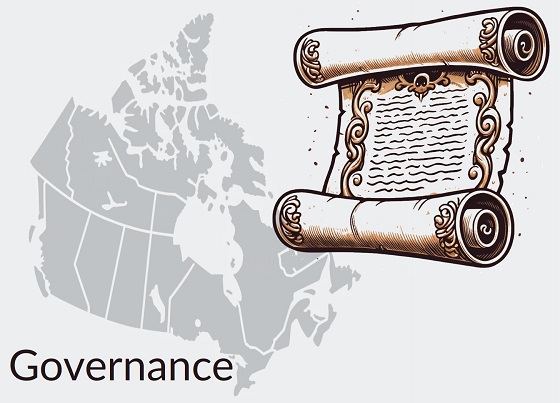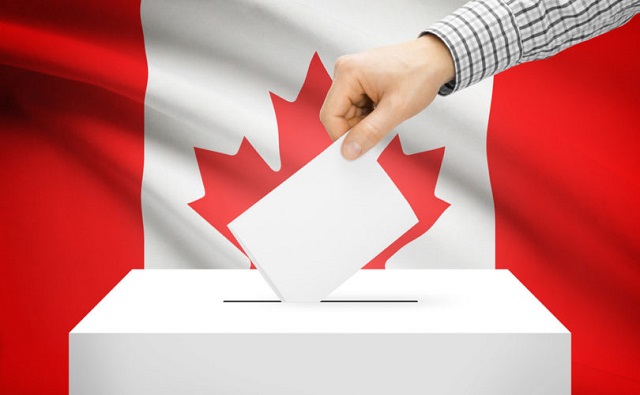David Clinton
Is Canada Abusing the Charter of Rights and Freedoms?

Canadians have no absolute right to equal treatment under the law.
Monitoring the intersection between equality and equity
Let me explain that. Section 15 of the Charter of Rights and Freedoms was, from the perspective of the Charter’s creators, an exceedingly difficult needle to thread. The tension between its two subsections carries the potential for confusion and even abuse. Here’s the text itself:
(1) Every individual is equal before and under the law and has the right to the equal protection and equal benefit of the law without discrimination and, in particular, without discrimination based on race, national or ethnic origin, colour, religion, sex, age or mental or physical disability.
(2) Section (1) does not preclude any law, program or activity that has as its object the amelioration of conditions of disadvantaged individuals or groups including those that are disadvantaged because of race, national or ethnic origin, colour, religion, sex, age or mental or physical disability.
15(1) guaranteed the equal treatment of all individuals. That’s something I can’t imagine any reasonable-minded person opposing. The problem was that, at the same time, the authors also wanted to leave room for unfair treatment for select groups through affirmative action programs. That’s the purpose of 15(2).
The Audit is a reader-supported publication. To receive new posts and support my work, consider becoming a free or paid subscriber.
If 15(2) didn’t exist, challenges to, say, hiring practices targeting historically disadvantaged racial groups could be launched based on the rights found in 15(1). Imagine people who didn’t technically qualify as disadvantaged but who might be better suited for and in greater immediate need of an advertised job. If the “affirmative action” candidate was nevertheless hired, couldn’t the others argue that they’d just suffered Charter-level discrimination? 15(2) is designed to ensure such challenges don’t happen.
Such state-imposed inequality may or may not be justifiable. That’s a debate that doesn’t interest me right now. Instead, my primary focus is on how the principle could be widely abused.
I should clarify that these rules only apply to government programs and agencies. While private companies might be bound by other areas of related law, the Charter was only written for government operations. But it’s nevertheless worth remembering that 4.4 million Canadians work for one level or another of government (when you include hospitals and public schools). That’s around 21 percent of all Canadian workers. And many more of us interact with governments regularly.
What kinds of abuse are possible? Well, consider how so many equality-related decisions are highly subjective and rely on the good faith and clarity of mind of the policy makers and public officials in positions of power. In that context:
- How can we know that factors like “ameliorative”, “disproportionate”, or “disadvantaged” are accurately and appropriately defined?
- How can we know that favoring one group won’t cause deep and irreparable harm to others?
- How can we know that even good-faith decisions aren’t made based on outdated assumptions or inaccurate stereotypes?
Easy-to-imagine practical examples of abuse could include:
- Provincial scholarship programs that target low-income students from only certain ethnic groups while excluding members of other groups who might currently experience even greater financial hardship.
- Seats in highly competitive university programs that are restricted to only candidates expressing specified identities without objective evidence that such individuals are currently meaningfully underrepresented in those programs or professional fields.
- Government-funded employment programs that subtly target communities likely to share particular political beliefs.
- Internal career advancement policies that prioritize identity and ethnicity over competence that lead to reduced organizational capacity.
- Social disruption due to arbitrary official favoritism for some ethnicities and identities over others.
Of course, misuse of 15(2) can always be tested in court. Programs are, after all, expected to pass the Oakes Test (for objectives that are pressing and substantial) and the Kapp Test (for goals that are truly ameliorative and appropriately targeted).
But that requires someone who notices the problem and has the considerable means necessary to launch a court challenge. There aren’t many people like that running around.
A government that felt that misuse of the law was causing significant damage to society could choose to by-pass 15(2) altogether by invoking the Notwithstanding Clause or by amending the constitution itself. But…well, good luck surviving either attempt.
More realistically, the government could write new legislation that guides the interpretation or application of 15(2). That could mean carefully defining what constitutes an “ameliorative program” or setting clear eligibility criteria for such programs. There would be no need to change the constitution, simply to properly define it.
Alternatively, governments could govern by example. This might mean tailoring their own policies and programs to reflect a more constrained interpretation of 15(2). They could actively participate in court cases to advocate for particular interpretations and present compelling arguments to influence how courts understand and apply the provision.
Finally, of course, they could appoint judges to the Supreme Court and federal courts who are more aligned with values associated with absolute equality under the law.
Subscribe to The Audit.
For the full experience, upgrade your subscription.
David Clinton
You’re Actually Voting for THEM? But why?


 By David Clinton
By David Clinton
Putting the “dialog” back in dialog
I hate it when public figures suggest that serious issues require a “dialog” or a “conversation”. That’s because real dialog and real conversation involve bi-directional communication, which is something very few public figures seem ready to undertake. Still, it would be nice is there was some practical mechanism through which a conversation could happen.
It should be obvious – and I’m sure you’ll agree – that no intelligent individual will be voting in the coming federal election for any party besides the one I’ve chosen. And yet I’ve got a nagging sense that, inexplicably, many of you have other plans. Which, since only intelligent people read The Audit, leads me directly to an epistemological conflict.
I have my doubts about the prospects for meaningful leadership debates. Even if such events are being planned, they’ll probably produce more shouting and slogans than a useful comparison of policy positions.
And I have remarkably little patience for opinion polls. Even if they turn out to have been accurate, they tell us absolutely nothing about what Canadians actually want. Poll numbers may be valuable to party campaign planners, but there’s very little there for me.
If I can’t even visualize the thinking taking place in other camps, I’m missing a big part of Canada’s biggest story. And I really don’t like being left out.
So I decided to ask you for your thoughts. I’d love for each of you to take a super-simple, one question survey. I’m not really interested in how you’re planning to vote, but why. I’m asked for open-ended explanations that justify your choice. Will your vote be a protest against something you don’t like or an expression of your confidence in one particular party? Is it just one issue that’s pushing you to the polling station or a whole set?
I’d do this as a Substack survey, but the Substack platform associates way too much of your private information with the results. I really, really want this one to be truly anonymous.
And when I say this is a “super simple” survey, I mean it. To make sure that absolutely no personal data accompanies your answers (and to save me having to work harder), the survey page is a charming throwback to PHP code in all its 1996 glory.
So please do take the survey: theaudit.ca/voting.
If there are enough responses, I plan to share my analysis of patterns and trends through The Audit.
Business
We’re paying the bills, why shouldn’t we have a say?


 By David Clinton
By David Clinton
Shaping Government Spending Choices to Reflect Taxpayer Preferences
Technically, the word “democracy” means “rule of the people”. But we all know that the ability to throw the bums out every few years is a poor substitute for “rule”. And as I’ve already demonstrated, the last set of bums you sent to Ottawa are 19 times more likely than not to simply vote along party lines. So who they are as individuals barely even matters.
This story isn’t new, and it hasn’t even got a decent villain. But it is about a universal weakness inherent in all modern, nation-scale democracies. After all, complex societies governed by hundreds of thousands of public servants who are responsible for spending trillions of dollars can’t realistically account for millions of individual voices. How could you even meaningfully process so many opinions?
Hang on. It’s 2025. These days, meaningfully processing lots of data is what we do. And the challenge of reliably collecting and administrating those opinions is trivial. I’m not suggesting we descend into some hellish form of governance by opinion poll. But I do wonder why we haven’t tried something that’s far more focused, measured, and verifiable: directed revenue spending.
Self-directed income tax payments? Crazy, no? Except that we’ve been doing it in Ontario for at least 60 years. We (sometimes) get to choose which of five school boards – English public, French public, English separate (Catholic), French separate (Catholic), or Protestant separate (Penetanguishene only) – will receive the education portion of our property tax.
Here’s how it could work. A set amount – perhaps 20 percent of the total federal tax you owe – would be considered discretionary. The T1 tax form could include the names of, say, ten spending programs next to numeric boxes. You would enter the percentage of the total discretionary portion of your income tax that you’d like directed to each program with the total of all ten boxes adding up to 100.
The specific programs made available might change from one year to the next. Some might appear only once every few years. That way, the departments responsible for executing the programs wouldn’t have to deal with unpredictable funding. But what’s more important, governments would have ongoing insights into what their constituents actually wanted them to be doing. If they disagreed, a government could up their game and do a better job explaining their preferences. Or it could just give up and follow the will of their taxpayers.
Since there would only be a limited number of pre-set options available, you wouldn’t have to worry about crackpot suggestions (“Nuke Amurika!”) or even reasoned and well-meaning protest campaigns (“Nuke Ottawa!”) taking over. And since everyone who files a tax form has to participate, you won’t have to worry about a small number of squeaky wheels dominating the public discourse.
Why would any governing party go along with such a plan? Well, they almost certainly won’t if that’s any comfort. Nevertheless, in theory at least, they could gain significant political legitimacy were their program preferences to receive overwhelming public support. And if politicians and civil servants truly believed they toil in the service of the people of Canada, they should be curious about what the people of Canada actually want.
What could go wrong?
Well the complexity involved with adding a new layer of constraints to spending planning can’t be lightly dismissed. And there’s always the risk that activists could learn to game the system by shaping mass movements through manipulative online messaging. The fact that wealthy taxpayers will have a disproportionate impact on spending also shouldn’t be ignored. Although, having said that, I’m not convinced that the voices of high-end taxpayers are less valuable than those of the paid lobbyists and PMO influencers who currently get all the attention.
Those are serious considerations. I’m decidedly less concerned about some other possible objections:
- The risk that taxpayers might demonstrate a preference for short term fixes or glamour projects over important long term wonkish needs (like debt servicing) rings hollow. Couldn’t those words just as easily describe the way many government departments already behave?
- Couldn’t taxpayer choices be influenced by dangerous misinformation campaigns? Allowing for the fact the words “misinformation campaign” make me nervous, that’s certainly possible. But I’m aware of no research demonstrating that, as a class, politicians and civil servants are somehow less susceptible to such influences.
- Won’t such a program allow governments to deflect responsibility for their actions? Hah! I spit in your face in rueful disdain! When was the last time any government official actually took responsibility (or even lost a job) over stupid decisions?
- Won’t restricting access to a large segment of funds make it harder to respond to time-sensitive emergencies? There are already plenty of political and policy-based constraints on emergency spending choices. There’s no reason this program couldn’t be structured intelligently enough to prevent appropriate responses to a genuine emergency.
This idea has no more chance of being applied as some of the crazy zero-tax ideas from my previous post. But things certainly aren’t perfect right now, and throwing some fresh ideas into the mix can’t hurt.
-

 Business2 days ago
Business2 days ago28 energy leaders call for eliminating ALL energy subsidies—even ones they benefit from
-

 2025 Federal Election2 days ago
2025 Federal Election2 days agoCarney’s Cap on Alberta Energy Costing Canada Billions
-

 Business2 days ago
Business2 days agoTrump Tariffs are not going away. Canada needs to adapt or face the consequences
-

 Economy2 days ago
Economy2 days agoSupport For National Pipelines And LNG Projects Gain Momentum, Even In Quebec
-

 Health2 days ago
Health2 days agoDr. Pierre Kory Exposes the Truth About the Texas ‘Measles Death’ Hoax
-

 Business20 hours ago
Business20 hours agoDOGE discovered $330M in Small Business loans awarded to children under 11
-

 Business2 days ago
Business2 days agoWhy a domestic economy upgrade trumps diversification
-

 COVID-1918 hours ago
COVID-1918 hours ago17-year-old died after taking COVID shot, but Ontario judge denies his family’s liability claim



